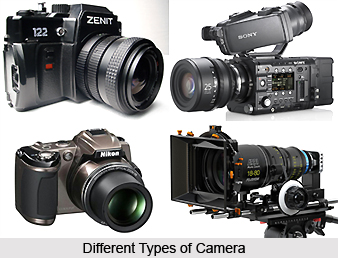 Tools and techniques of the photography are interrelated with the camera. The fundamental piece of equipment of any kind of photography is the camera. Like all craftsmen and artists, it`s a good idea to know the tools of photography very well.
Tools and techniques of the photography are interrelated with the camera. The fundamental piece of equipment of any kind of photography is the camera. Like all craftsmen and artists, it`s a good idea to know the tools of photography very well.
The aspect ratio of panoramic photographs that always makes the photographers whether the photographer is professional or amateur; there is a need to slow down for a closer look.
Human Eyes and Camera
The human eye, depending on the owner`s health and physiology, takes in a field of view of about 90 degree to 95 degree. The eyes work together to capture a combined binocular field of view of approximately 120 degree, separated by an inter-papillary distance of about 54-68mm, when looking straight ahead. Combined, the eyes can take in a more expansive Angle of View (AOV) of about 180 to 200 degree when both eyes pan left and right in unison.
Aspect Ratio of Camera
Most of the pictures are on a regular basis in print or online are invariably horizontal, in 3:2 or 4:3 rectangular aspect ratios, which can be visually digested with a quick pass or two of our eyes. The visual data contained within wider-aspect panorama photographs, however, is distributed across a Field of View (FOV) too wide to absorb in a single glance depending on the subject matter of the photography. In addition to the attention-grabbing aspect ratios, panoramic photographs catch the visual attention because panoramic images are quite similar to the way one see the world, through horizontally aligned eyes.
Panoramic Imaging in Camera
 In the days of film, there were cameras manufactured specifically for panoramic imaging. Short of cropping a third off the tops and bottoms of standard-sized frames or butting consecutively captured prints together as a means of creating panoramas (pre-digital stitching), these specialty cameras, which were available in both 35mm and medium formats, were the only way to create panoramic photographs.
In the days of film, there were cameras manufactured specifically for panoramic imaging. Short of cropping a third off the tops and bottoms of standard-sized frames or butting consecutively captured prints together as a means of creating panoramas (pre-digital stitching), these specialty cameras, which were available in both 35mm and medium formats, were the only way to create panoramic photographs.
Controls of Camera
While so many of today`s cameras try to do the thinking for photographers, to get really great images one need to know how to control the camera. One also needs to know what controls affect what aspects of photographs of photographers.
Shutter Speed of Camera
Shutter speed one of the basic light control functions of a camera. Aperture, film speed, and shutter speed work together to adjust how much light strikes film and how that light is recorded.
Aperture of Camera
Aperture is one of the most confusing aspects of photography for new photographers. The aperture is an adjustable opening inside the camera lens that works very similar the iris in the human eyes.
Preset Modes of Camera
These are camera settings that are pre-programmed into the camera so that the photographer only has to turn a dial to change several settings at once. These presets have become widely varied between camera manufacturers with everything from "foliage" to "beach" presets. Some cameras even have "fireworks" presets. However, there are a few presets that are almost standards and appear on a wide variety of cameras.
Composition of Camera
Composition simply means how the image is put together. The greatest subject in the world will not automatically make a great image. One has to know how to put that image on film. Some of the basic compositions of the cameras are:
| Rule of Thirds |
| Depth of Field |
| Centring the Subject |
| Horizontal vs. Vertical |
| Point of View |
| Leading Lines |
| Natural Frames |
Lighting and Colour of Camera
Photography is all about light. The photographs are recorded light. How one can control the available light and add additional light when needed is basis for all photography. There are numerous controls and methods for controlling light available to today`s photographer. Some of them are:
| Camera`s Light Meter |
| Aperture |
| Shutter Speed |
| Photography Exposure |
| Fill Flash |
| Reflectors |
 Tools and techniques of the photography are interrelated with the camera. The fundamental piece of equipment of any kind of photography is the camera. Like all craftsmen and artists, it`s a good idea to know the tools of photography very well.
Tools and techniques of the photography are interrelated with the camera. The fundamental piece of equipment of any kind of photography is the camera. Like all craftsmen and artists, it`s a good idea to know the tools of photography very well.
 In the days of film, there were cameras manufactured specifically for panoramic imaging. Short of cropping a third off the tops and bottoms of standard-sized frames or butting consecutively captured prints together as a means of creating panoramas (pre-digital stitching), these specialty cameras, which were available in both 35mm and medium formats, were the only way to create panoramic photographs.
In the days of film, there were cameras manufactured specifically for panoramic imaging. Short of cropping a third off the tops and bottoms of standard-sized frames or butting consecutively captured prints together as a means of creating panoramas (pre-digital stitching), these specialty cameras, which were available in both 35mm and medium formats, were the only way to create panoramic photographs.




